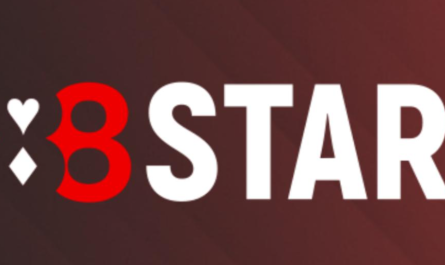Blockchain is a cutting-edge database system. Almost all cryptocurrencies are built around it. The blockchain network distributes identical copies of the database. This makes hacking or fooling the system extremely tough.
Cryptocurrencies are the most widely used blockchain application right now. However, the technology has the potential to be used in a wide range of situations.
What is Blockchain, and how does it work?
Blockchain is a decentralized digital database that may be used to store any type of data. The blockchain can be used to keep track of bitcoin transactions and NFT ownership.
Blockchain is unlike any other database in that it can hold this type of data. It operates on a purely decentralized basis. It is not centralized and administered by a single administrator.
On several computers, identical clones of a blockchain database can be found. They are dispersed throughout the network. Individual computers are referred as as nodes.
What is the mechanism behind blockchain?
A digital database (accounting book) is frequently described as a “chain” made up of discrete “blocks,” hence the name blockchain was not chosen at random. A new “block” is created and added to the “chain” every time fresh data is added to the network. To be identical, all nodes must update their blockchain database versions.
The method by which these blocks are formed is crucial to the blockchain’s security. Most nodes must check and confirm the legitimacy of new data before a new block can be added to the ledger.
It ensures that new transactions in the block are not fraudulent, for example, in the case of cryptocurrency. You should also double-check that the coins haven’t been spent.
A standalone database or an Excel spreadsheet are not the same as this. A person can make modifications here without being watched.
“The block is added to the chain once there is consensus. The transactions are recorded in a distributed ledger, according to C. Neil Gray, a Fintech Partner at Duane Morris LLP. “The blocks are solidly joined. This establishes a safe digital chain from the start of the book to the present.
Cryptography is generally used to protect transactions. This means that in order to conduct the transaction, the nodes must solve difficult mathematical equations.
“In general, nodes are rewarded for their attempts to alter shared data. According to Sarah Shtylman, a financial technology and blockchain specialist at Perkins Coie, they are receiving new shares in the blockchain currency, similar to fresh bitcoins in the bitcoin blockchain.
Private blockchains vs. public blockchains
There are two types of blockchains: public and private. The public blockchain is open to everyone. This means that anyone can access the blockchain data and read, write, or query it. Because nodes are not under the control of a single person or entity. As a result, changing transactions on a public blockchain is extremely difficult.
A single corporation or group controls a private blockchain, on the other hand. This committee is the only one who gets to pick who gets into the system. Furthermore, only the group has the authority to take control of and alter the blockchain. This private blockchain procedure is more akin to a data storage system for internal use. However, for enhanced security, it is distributed over multiple nodes.
What is the purpose of blockchain?
Blockchain technology has a wide range of applications. This includes anything from financial services to voting system management.
Cryptocurrency
The most common application of blockchain nowadays is as the foundation for cryptocurrencies like Bitcoin and Ethereum. The blockchain records transactions when people buy, sell, or spend cryptocurrency. The greater the number of people who use bitcoins, the more widespread blockchain will become.
“Cryptocurrencies are not generally used to buy goods and services because they are volatile. But that is about to change. According to Patrick Daugherty, senior partner at Foley & Lardner and head of the firm’s blockchain working group, PayPal, Square, and other money processors allow sellers and merchants to accept digital currencies as payment.
Banking
Blockchain is also used to conduct transactions with fiat currency such as dollars and euros, in addition to cryptocurrencies. It is faster than using a bank or other financial institution to transfer funds. Transactions can be confirmed and completed more quickly outside of normal business hours.
Transfer of property
The blockchain can also be used to document and transfer asset ownership. This is highly popular these days for digital assets like NFT, which documents the ownership of digital art and movies.
Blockchain, on the other hand, can be used to transfer ownership of physical items. These include, for example, property and automobile ownership. The blockchain will be used by both sides of the site to verify that one of them is the owner. The other has the funds to purchase it. They’d then be able to execute the transaction and record it on the blockchain.
They could then transfer the property’s title without having to manually fill out paperwork. It would be updated in the blockchain right away.
Smart contracts
Another blockchain breakthrough is self-executing contracts. They’re also referred to as “smart contracts.” When certain circumstances are met, these digital contracts go into effect automatically. Payment for a goods, for example, might be released right away. This occurs when both buyers and sellers meet all of the transaction’s requirements.
“We believe smart contracts have a lot of potential. “We can automate contracts using blockchain technology and code commands,” Gray explains. “In a distributed ledger, a correctly encoded smart legal contract can minimize, if not eliminate, third-party verification.”
Monitoring the supply chain
Huge volumes of data are stored in supply chains. Especially when items are being transported from one location to another. It can be difficult to pinpoint the source of an issue using typical data storage methods. Which merchant, for example, is responsible for the substandard goods?
The use of a blockchain to store this data makes it easier to trace and monitor your supply chain. IBM Food Trust is one such example. It tracks food from harvest through consumption using blockchain technology.
Selection
Experts in the field of selection are researching how blockchain might be used to avoid electoral fraud. Voting on the blockchain, in principle, would allow everyone to vote. This makes it difficult to handle. Furthermore, there would be no need to collect and validate ballots by hand.
Benefits of Blockchain Technology
Increased transaction accuracy
Multiple nodes must verify the blockchain transaction. This can help to limit the number of mistakes. If one node’s database contains a mistake, others will notice something is wrong. You detect a blunder.
If someone commits a mistake in a traditional database, the transaction has a significantly better probability of succeeding. Furthermore, each resource is identified and tracked separately in the blockchain ledger. As a result, spending the money twice is not an option. Unlike someone who spends more than their money account allows for and thereby doubles their expenses.
There is no need for a middleman
Two parties can confirm and finalize a transaction on the blockchain. As a result, a third party is no longer required. This not only saves time but also money by eliminating the need for an intermediary like a bank.
“Blockchain has the ability to improve the efficiency of all digital business.” It provides those who don’t have or have too few banks a stronger financial capacity to act. As a result, Sarah Shtylman, Advisor, Fintech and Blockchain at Perkins Coie, believes it will enable a new generation of online applications.
Added security
In theory, a decentralized network like blockchain makes fraudulent transactions nearly impossible. To execute fictitious deals, you’d have to hack every node and change every ledger. It is theoretically possible. Many cryptocurrency blockchain systems, on the other hand, employ transaction verification mechanisms such as proof-of-stake or proof-of-work. This not only makes adding fraudulent transactions harder, but it also isn’t in the participants’ best interests.
Transfers with greater efficiency
Blockchains are available at all times. They make financial and property transactions more efficient, especially in the international arena. You do not need to wait days for your bank or government agency to personally confirm everything.
Disadvantages of Blockchain
Per-second transaction limit
To confirm transactions, blockchain relies on a wide network. As a result, the speed at which transactions can be completed has a limit. Bitcoin, for example, can only handle 4.6 transactions per second. In comparison, Visa transactions occur at a rate of 1,700 per second. Furthermore, the growing quantity of transactions may cause network speed issues. Scalability will be difficult until this improves.
Energy costs are really high
It takes substantially more energy to verify transactions across all nodes than it does to validate transactions in a single database or spreadsheet. On the one hand, this raises the cost of blockchain-based transactions. On the other hand, it pollutes the environment by emitting a lot of CO2.
As a result, certain industry leaders are beginning to distance themselves from blockchain technology like Bitcoin: Tesla will no longer take Bitcoin, according to Elon Musk. The reason for this is that environmental harm is a major concern.
Danger of property loss
A cryptographic key is used to protect some digital assets. A blockchain wallet is an example of this cryptocurrency. You must keep a close eye on this key.
“There is currently no method to recover a digital asset if the owner loses the private cryptographic key that grants access to the asset.” “The resource is gone for good,” Gray adds. You can’t rely on a central authority like B. his bank to recover access because the system is decentralized.
Possibility of criminal conduct
More privacy and secrecy are provided by blockchain decentralization. Regrettably, this makes them appealing to crooks. Illegal transactions are more difficult to track on the blockchain. The banking transaction, on the other hand, has an actual name attached to it.
How can you invest in blockchain technology?
It is not possible to invest in the blockchain itself. It’s nothing more than a mechanism for storing and processing data. You can, however, invest in assets and businesses that employ this technology.
“Buying cryptocurrencies like Bitcoin, Ethereum, and other blockchain tokens is the simplest,” Gray argues.
Investing in blockchain companies that use this technology is another option. Santander Bank, for example, is testing blockchain-based financial solutions. Do you want to include blockchain technology in your investment portfolio? You could buy their stock back then.
You may, for example, acquire shares of an exchange-traded fund (ETF) that invests in blockchain firms for a more diversified approach. This includes the Invesco CoinShares Global Blockchain ETF, for example (ISIN: IE00BGBN6P67). The ETF, which was launched in 2019, has a market capitalization of EUR 714 million, making it one of the largest. With certain brokers, it’s also accessible as a savings plan.
What do you recall about the text?
Despite its potential, blockchain is still considered a niche technology. Gray believes that blockchain has the potential to become more widely employed in the future. However, it is contingent on the government’s future policy. “Only time will tell if and when regulators such as the SEC act. “One thing is certain: the goal will be to safeguard markets and investors,” he stated. The financial regulator Bafin would be the competent body in Germany.
Blockchain, according to Shtylman, is similar to the beginnings of the internet. “The original version of Google took us around 15 years to see.” And Facebook has been around for more than two decades. It’s impossible to say where blockchain technology will go in ten or fifteen years.
There are still challenges to overcome. When it comes to transaction restrictions and energy expenditures, this is especially true. Blockchain-based investments, on the other hand, can be a good option for investors who recognize the promise in technology. However, we recommend that you invest as much “virtual money” as possible rather than the money set aside for retirement.



